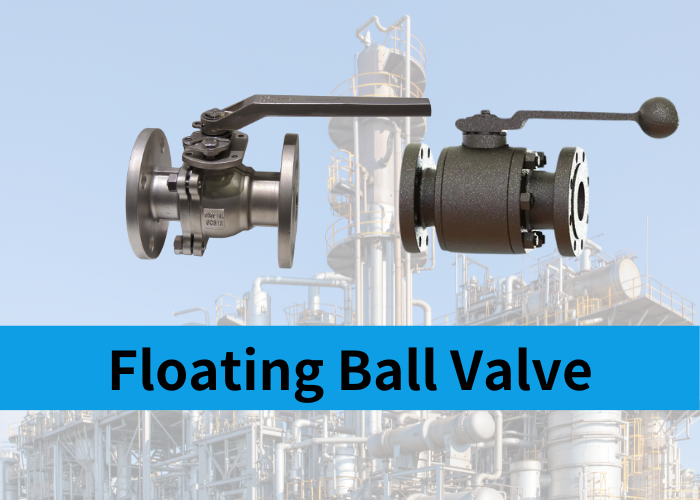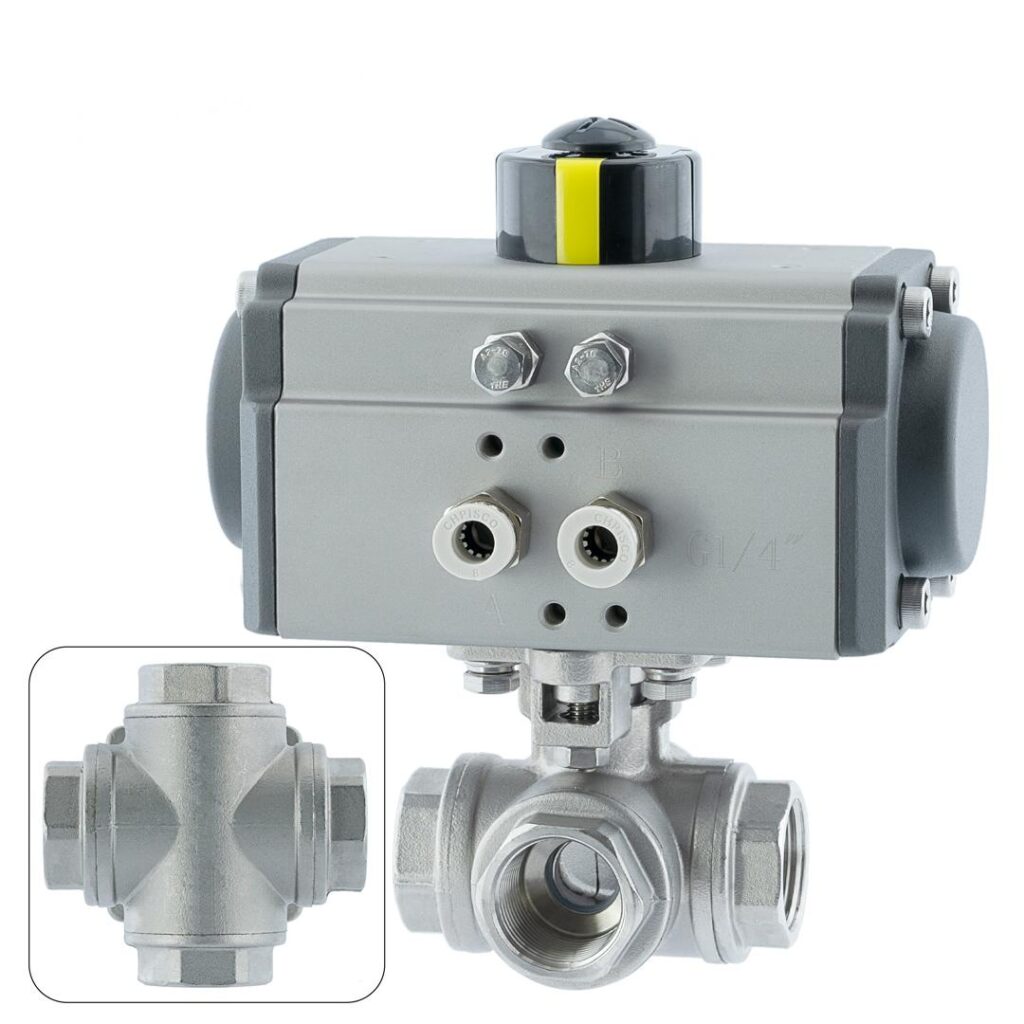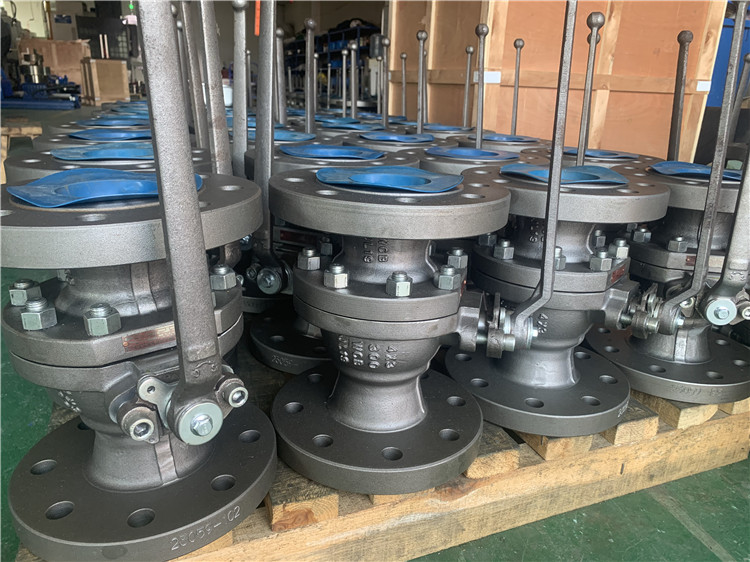
Today, we’ll explore the fascinating world of fluid control and how a floating ball valve plays a crucial role in this process. Fluid control is an essential aspect of various industries, ranging from oil and gas to water treatment. Engineers rely on innovative technologies to ensure efficient and precise control of fluid flow, and one such device is the floating ball valve. In this article, we will delve into this ingenious valve’s working principle and applications, shedding light on its significance in fluid management. So, let’s dive in and discover how a floating ball valve revolutionizes fluid control systems!
Ball valves are well-known for their quick on/off function, convenient usage, and compact and long-lasting design. The most often utilized valves in industrial pipe systems are floating ball valves. The ‘floating’ component of the term refers to the freedom of movement of the ball inside the valve.
How Do Floating Ball Valves Work?
A stem or shaft connecting to the top of the ball operates floating ball valves. This rotates it 90 degrees, often known as a quarter turn. When the ball spins, the port is covered or uncovered by the valve body’s wall, allowing or restricting flow.
The stem is linked loosely enough that as the ball rotates, the flow pressure presses it against the downstream seat, forming a tight seal. After a certain level of seat wear has developed, floating ball valves may not seal as effectively in low-pressure applications because there may need to be more pressure to drive the ball to form a tight enough seal.
However, after the seats have begun to wear, the downstream pressure is usually sufficient to maintain a tight enough seal.
Floating Ball Valve vs. Trunnion Ball Valve
§ A trunnion ball valve, which works similarly to floating ball valves but differs in the method the ball is employed, is also used in industrial piping systems.
§ The ball in a trunnion ball valve does not float and is linked to the trunnion. This maintains a perfect seal on both sides while adding no torque to the stem.
§ A trunnion ball valve is ideal for higher-pressure applications because it provides a superior seal.
Key Components of a Floating Ball Valve
A floating ball valve has quite a few essential components that help it to run so efficiently, and they are:
§ Valve body – The valve body is the chamber that houses the valve mechanism. Ball valves are commonly made of iron, steel, brass, bronze, or PVC.
§ Ball – a sphere pivots with a flow path through the center. The stem (or shaft) links it to the valve body.
§ Bore or port – the hollowed-out center of the ball that allows flow.
§ Packing – consists of flexible seals that wrap around the stem to prevent media from escaping from the valve body.
§ Seat – the disk that forms the seal between the body and the ball.
§ Stem – the shaft that holds the ball and connects it to the actuator or operating stem
§ Actuator – an external device used to rotate the valve’s stem. This can be a lever, gear, electric, or pneumatic/hydraulic actuator.
A floating ball valve ball is hung in the medium it regulates and is held in place by seats, often constructed of thermoplastic. After that, the seats form a tight seal between the ball and the body.
Floating ball valves can provide bi-directional sealing, which means the ball can move sufficiently to stop flow in either direction. This type of valve is inexpensive and lightweight and can be found in oil, water, gas, and steam applications.

Advantages of Floating Ball Valve
The floating ball valve offers several advantages, making it a preferred choice for fluid control applications. Here are some key benefits of using a floating ball valve:
1. Low Torque Operation: Floating ball valves require minimal torque, making them easy to open and close with a simple quarter-turn motion. This characteristic reduces the need for powerful actuators, resulting in cost savings and smoother operation.
2. Quick Shutoff: The design of the floating ball valve allows for rapid and reliable shutoff. When the valve is fully closed, the floating ball presses against the seat, creating a tight seal that prevents further fluid flow.
3. Wide Range of Applications: Floating ball valves are versatile and can handle various fluids, including gases, liquids, and slurries. They are suitable for multiple industries, such as oil and gas, petrochemical, water treatment, and general industrial applications.
4. Minimal Leakage: Due to the secure seal created by the floating ball pressing against the seat, floating ball valves exhibit low leakage rates, ensuring efficient fluid control and preventing wastage.
5. Reduced Wear and Tear: The floating design of the ball in the valve means it is not constrained by a stem, resulting in less friction and wear. This characteristic contributes to the valve’s longevity and reduces the need for frequent maintenance.
6. Bi-Directional Flow: Floating ball valves are designed to allow bidirectional flow, meaning they can handle fluids in either direction, simplifying installation and enhancing system flexibility.
7. Easy Maintenance: Floating ball valves are relatively easy to disassemble and maintain. Their simple design and fewer components make inspections, repairs, and replacements more straightforward and time-efficient.
8. Cost-Effective: Floating ball valves are often more cost-effective than other valves, making them a popular choice for various applications where budget considerations are essential.
9. High Pressure and Temperature Capabilities: Floating ball valves can withstand high-pressure and high-temperature conditions, making them suitable for demanding industrial environments.
10. Compatibility with Automation: Floating ball valves can be easily integrated into automated systems, allowing for remote control and monitoring, further enhancing their versatility and efficiency.

Applications of Floating Ball Valve
Oil and Gas Industry: Oil and gas production uses floating ball valves to control the flow of crude oil, natural gas, and other hydrocarbons in pipelines and wellheads. They also serve as shutoff valves in storage tanks and provide isolation and control in refining processes.
Petrochemical Plants: In petrochemical facilities, floating ball valves regulate the flow of various chemicals and petrochemical products during manufacturing processes, ensuring precise control and preventing leaks.
Water and Wastewater Treatment: Floating ball valves are used in water treatment plants to control water flow during purification and distribution processes. They also play a role in wastewater treatment facilities to manage the flow of effluents.
Power Generation: Floating ball valves are used in power plants to control the flow of steam, condensate, and various fluids in boiler systems, cooling towers, and other critical applications.
Pharmaceutical Industry: In pharmaceutical manufacturing, floating ball valves control the flow of liquids and chemicals during the production and processing of pharmaceutical products with precise dosing and mixing.
Food and Beverage Industry: Floating ball valves are employed in food and beverage processing plants to regulate the flow of ingredients, liquids, and cleaning agents, ensuring hygienic and efficient operations.
HVAC Systems: Floating ball valves are utilized in heating, ventilation, and air conditioning systems to regulate the flow of water or refrigerants for maintaining optimal temperatures in buildings and industrial facilities.
Marine and Shipbuilding: In marine applications, floating ball valves are used for sea-water systems, fuel lines, and other critical fluid control tasks on ships and offshore platforms.
Chemical Processing: Floating ball valves play a crucial role in chemical processing plants, controlling the flow of various chemicals and corrosive substances for safe and efficient operations.
Pulp and Paper Industry: Floating ball valves are used in pulp and paper mills to control the flow of liquids, chemicals, and steam throughout the manufacturing process, including applications in pulp digesters, chemical recovery, and paper machines.
The floating ball valve’s specific task may vary in each of these industries. Still, its primary function remains consistent: providing reliable and precise fluid control, preventing leaks, and ensuring safety and efficiency in industrial processes.






